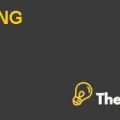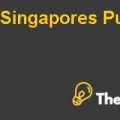Research Paper Case Solution
Advantages of Chevron Corporation
Depending on the country, the company tends to market its premium lubricants under 3 world class master brands namely Caltex, Texaco and Chevron. Within each of the discussed brand are trusted products which include Ursa, Havoline and Delo which equally shares the premium base oils customers’trust and are also well known.
Target Market
The company should use psycho graphic and geographic segmentation strategies for its product port folio means for business to business (B2B) segments, also the company should use demographics for its retail products segment in addition to other segmentation strategies. Also, the company should use differentiating targeting strategies for its services and products.
Direction and Image
The company should be placed at the busiest street intersection in Tokyo, Japan namely Shibuya Crossing, since the surroundinga reasa real ways packed with students, shoppers, young couples as well as commuters, the company would gain competitive advantage in catering large customer base. Due to the heavy traffic, the company would most likely develop the energy that would improve the lives and also empower the world to go forward and innovate more.
Image 01 shows Shibuya Crossing: busiest street intersection
Branding
The brand strategy of the company would be to integrate Corporate Social Responsibility in its brand strategy to improve the society through its business activities as well as contributing on the community development.(Bakker, 2019).
Marketing
The marketing objectives of the company would be to gain the market share from the market rivals by 10% without altering the price ranges of the company’s premium brands. Additionally, the company would increase awarenessamongst the customers about Superior Petro Group via holistic media campaigns. Additionally, the company would instigate the usage of the product or services in the rural markets for the agricultural machinery.
Competition
The competitiveness of the energy sector and the oil and gas industry in the upstream sector of the industry is highly or significantly intense or fierce. The market competitors such as Royal Dutch Shell has generated $385.6 billion revenues for the year, 2015 whereas Exxon Mobil has generated $364.5 billion revenues for the year 2015, totally it has generated $194.2 billion revenues for the year 2015.
In addition to this, the best indicator for observing the size of the company refers to the market capitalization. The market value of the Exxon Mobil, US is 356.5, Petro China 329.7, Chevron, US 197.4, Royal Dutch Shell 192.1, Total France 118.5 etc. (Pitatzis, 2016).
Pricing & Making the Sale
Initially, the company would adopt penetration pricing strategy in which the company would most likely set low prices of product or services in order to reach the wide fraction of the market. Later on, the company would adopt competitive pricing after having a closer look on the market dynamics and key trends in oil and gas industry. In addition to this, the company has pursued with sales activities which need to be supported by understanding to build the better customer businesses.(Dean, 2015).
Ownership Roles / Responsibilities
The roles and responsibilities of the owner at Superior Petro Group should promote the strong governance practices in the organization as a whole. The boards of directors would be responsible to direct the affairs of the corporation and also they should be committed to sound principles of the corporate governance. Theexecutives would most likely be expected to achieve the targeted goals within five years of assuming their position in the organization.
Management Roles / Responsibilities
The roles and responsibilities of the management is evident in any oil and gas company in to days’ world. The information risk management would be responsible to make sure that each and every security aspect in the contract are adhere,which can be done by reviewing the relevant documents form the contracting organizations such as competition law, software licensing, export controls, privacy and confidentiality. Also, the technical data management would be responsible to manage the essential scientific and technical information and data used in Superior Petro Group. Their roles include organization, collaboration, scoping and knowledge sharing.
Supervisors / Leads Roles / Responsibilities
The roles and responsibilities of the supervisors would be to set goals and objectives for the deadlines and performance that would most likely comply with the plan and vision of the company in both short term and long term. Not only this, they would organize the workflow as well as ensure that the employees understand their delegated tasks and duties. In addition to this, the supervisors would monitor the productivity of the employees, hence provides coaching and constructive feedback.
Production Operator Roles and Responsibilities
Production operators would be engaged in each and every stage of the Superior Petro Group’s production. They would be central to the production of the business. They would ensure to support the new projects and they will also file development planning for the purpose of making sure of optimal and safe operability of the future facilities.
Office / Support Staff Roles / Responsibilities
Superior Petro Group’s operations and maintenance employees would be working in the stimulating environment that would reward teamwork, value diversity, and encourage the career development as well as continuous learning. They would possess many roles such as:
- They would demonstrate innovation, creativity and initiative.
- They would exhibit concise and clear written as well as oral skills to convey present position, facts and interpret policies.
- They would manage multiple responsibilities and tasks simultaneously, process work accurately and in a timely manner.
- They would also assess situation accurately, identify key problems as well as develop the workable situations.
Income statement
Its total income is increasing with increasing trend, which shows a positive profit for the company in upcoming years. The exhibits can be seen in Appendix A.
Balance sheet
Its total equity is increasing with increasing trend, which also increases the total liabilities for the company. That is why its debt to equity ratio will not change in the future. The exhibits can be seen in Appendix B.
Cash flows statement
Cash flows from operations are gradually increasing in upcoming years which is the positive sign for the company that will be ultimately beneficial for the future expansions in related and diversified areas for the company. The exhibits can be seen in Appendix C.
Location
The location of the Superior Petro Group would be in the busiestinter section in Tokyo,Japan, which would allow the company to provide its product or services to large customer base, thus increasing profit returns and maximizing the market share.
Supply and Inventory Management
The supply chain management of the company should create opportunities and promote high standards of social, safety and environmental performance. Additionally, the company’s approach should be to maintain the supply chain that should focus on two critical elements such as; the company should create prosperity through inclusive and local economic opportunity. The company’s supply chain management should have various objectives such as; standardizing practices as well as technologies, putting demand driven practice center and front of operations and generating stable cash flows.
In addition, the inventory management system i.e. Inventory managed order network would allow the company to proactively keep vital inventory on their customer shelves. Also, through automated replenishment system, customer would no longer need placing orders, thus running of the inventory as well as building safety cushions. The model would provide various benefits to the company such as; it would omit the expensive excess inventory, that stipulate the increase in the working capital, ensure the product is on site at the time of need, quicker response times to varying conditions, reducing cost of transaction (data entry and invoices), omittingerective order patterns and streamlining reconciliation processes and financial statements.
Production and Distribution
The marketing logistics team at Superior Petro Group should make a commitment to build the best fuel distribution system. Also, the company should develop the most effective as well as efficient distribution operation in the petroleum industry by using the best in class processes.
Conclusion
To sum up, the Superior Petro Group would be highly profitable and feasible, the location of the Superior Petro Group would be in the busiest intersection in Tokyo, Japan, and the company would make a commitment to build the best fuel distribution system.The inventory management system i.e. inventory managed order network would allow the company to proactively keep vital inventory on their customer shelves. It is to conclude that the project would be feasible or viable for competing with competitors, thus generating increased profit margin.
Appendix A
| 2017 | 2018 | 2019 | 2020 | 2021 | |
| Sales and other revenue | 206,757,630 | 210,892,783 | 215,110,638 | 219,412,851 | 223,801,108 |
| Sales tax | (37,909,193) | (38,667,377) | (39,440,724) | (40,229,539) | (41,034,130) |
| Net revenue | 168,848,737 | 172,225,712 | 175,670,226 | 179,183,630 | 182,767,303 |
| Cogs | 153,972,023 | 157,051,463 | 160,192,493 | 163,396,343 | 166,664,269 |
| Gross profit | 14,876,414 | 15,173,942 | 15,477,421 | 15,786,970 | 16,102,709 |
| Distribution and marketing Expense | 6,018,105 | 6,138,467 | 6,261,236 | 6,386,461 | 6,514,190 |
| Administration expense | 4,146,166 | 4,229,089 | 4,313,671 | 4,399,945 | 4,487,943 |
| other expense | 1,411,469 | 1,439,698 | 1,468,492 | 1,497,862 | 1,527,819 |
| other Income | 419,559 | 427,950 | 436,509 | 445,239 | 454,144 |
| Operating profit | 3,720,233 | 3,794,638 | 3,870,530 | 3,947,941 | 4,026,900 |
| Finance Cost | (235,049) | (239,750) | (244,545) | (249,436) | (254,425) |
| 3,485,184 | 3,554,888 | 3,625,985 | 3,698,505 | 3,772,475 | |
| Share of profit of associate | 837,776 | 854,532 | 871,622 | 889,055 | 906,836 |
| Profit before taxation | 4,322,960 | 4,409,419 | 4,497,608 | 4,587,560 | 4,679,311 |
| taxation | 1,140,258 | 1,163,063 | 1,186,324 | 1,210,051 | 1,234,252 |
| Taxation Profit for the year | 3,182,702 | 3,246,356 | 3,311,283 | 3,377,509 | 3,445,059 |
Appendix B
2017 |
2018 |
2019 |
2020 |
2021 |
|
| Assets | |||||
| Non-Current assets | |||||
| PP&E | 10,000,115 | 10,200,117 | 10,404,120 | 10,612,202 | 10,824,446 |
| Intangible Asset | - | - | - | - | - |
| Long term investment | 4,051,815 | 4,132,851 | 4,215,508 | 4,299,818 | 4,385,815 |
| Long term loan | 17,820 | 18,176 | 18,540 | 18,911 | 19,289 |
| long term deposit and prepayment | 289,045 | 294,826 | 300,722 | 306,737 | 312,872 |
| Defered tax | 1,214,351 | 1,238,638 | 1,263,411 | 1,288,679 | 1,314,453 |
| Total Non-Current assets | 15,573,146 | 15,884,609 | 16,202,301 | 16,526,347 | 16,856,874 |
| Current Assets | |||||
| Stock in Trade | 9,500,585 | 9,690,597 | 9,884,409 | 10,082,097 | 10,283,739 |
| Trade debts | 3,101,181 | 3,163,205 | 3,226,469 | 3,290,998 | 3,356,818 |
| Loans and advances | 48,403 | 49,371 | 50,358 | 51,366 | 52,393 |
| Short term prepayments | 304,673 | 310,766 | 316,982 | 323,321 | 329,788 |
| other receivables | 7,773,261 | 7,928,726 | 8,087,301 | 8,249,047 | 8,414,028 |
| Cash and bank balances | 2,591,864 | 2,643,701 | 2,696,575 | 2,750,507 | 2,805,517 |
| Total Current Assets | 23,319,967 | 23,786,366 | 24,262,094 | 24,747,336 | 25,242,282 |
| Total Assets | 38,893,113 | 39,670,975 | 40,464,395 | 41,273,683 | 42,099,156 |
| Equity and Liabilities Equity | |||||
| Share capital | 1,070,125 | 1,091,528 | 1,113,358 | 1,135,625 | 1,158,338 |
| Share premium | 1,503,803 | 1,533,879 | 1,564,557 | 1,595,848 | 1,627,765 |
| General reserves | 207,202 | 211,346 | 215,573 | 219,884 | 224,282 |
| Unappropriated profit | 7,738,731 | 7,893,506 | 8,051,376 | 8,212,403 | 8,376,651 |
| Remeasurement of post-employment benefit | (321,601) | (328,033) | (334,594) | (341,286) | (348,111) |
| Total Equity | 10,198,061 | 10,402,022 | 10,610,063 | 10,822,264 | 11,038,709 |
| Liabilities and Non-Current equity | |||||
| Asset retirement obligation | 93,809 | 95,685 | 97,599 | 99,551 | 101,542 |
| Current Liability | |||||
| Trade and other payable | 27,154,452 | 27,697,541 | 28,251,492 | 28,816,522 | 29,392,852 |
| Accrued markup | 431 | 440 | 448 | 457 | 467 |
| short term borrowing | 395,000 | 402,900 | 410,958 | 419,177 | 427,561 |
| taxations | 1,051,361 | 1,072,388 | 1,093,836 | 1,115,713 | 1,138,027 |
| 28,695,053 | 29,268,954 | 29,854,333 | 30,451,420 | 31,060,448 | |
| Total Liability and Equity | 38,893,113 | 39,670,975 | 40,464,395 | 41,273,683 | 42,099,156 |
Appendix C
2017 |
2018 |
2019 |
2020 |
2021 |
|
| Cash flow from Operating | |||||
| Cash generated from operation | 1,991,410 | 2,031,238 | 2,071,863 | 2,113,300 | 2,155,566 |
| finance cost paid | (52,396) | (53,444) | (54,513) | (55,603) | (56,715) |
| Income tax paid | (359,956) | (367,155) | (374,498) | (381,988) | (389,628) |
| Long term loan and advances | (14,725) | (15,020) | (15,320) | (15,626) | (15,939) |
| long term deposit and prepayment | (128,728) | (131,303) | (133,929) | (136,607) | (139,339) |
| Interest received on short term deposit | 115,419 | 117,727 | 120,082 | 122,484 | 124,933 |
| Net cash generated from operating | 1,551,020 | 1,582,040 | 1,613,681 | 1,645,955 | 1,678,874 |
| Cash flow from Investing | |||||
| Fixed Capital Expenditure | (1,715,562) | (1,749,873) | (1,784,871) | (1,820,568) | (1,856,979) |
| Proceed from disposal of operating assets | 5,391 | 5,499 | 5,609 | 5,721 | 5,835 |
| Dividend received from associate | 521,521 | 531,951 | 542,590 | 553,442 | 564,511 |
| Net cash generated from Investing activities | (1,188,650) | (1,212,423) | (1,236,671) | (1,261,405) | (1,286,633) |
| Cash flow from financing activities | |||||
| Dividend paid | (4,153,911) | (4,236,989) | (4,321,729) | (4,408,164) | (4,496,327) |
| Net Increase/Decrease in cash and cash equivalent | (3,791,541) | (3,867,372) | (3,944,719) | (4,023,614) | (4,104,086) |
| cash and cash equivalent at beginning of year | 5,988,405 | 6,108,173 | 6,230,337 | 6,354,943 | 6,482,042 |
| cash and cash equivalent at ending of year | 2,196,864 | 2,240,801 | 2,285,617 | 2,331,330 | 2,377,956 |













